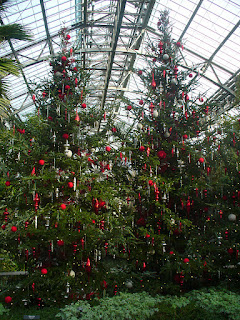 |
| Francisco Goya, 1787 |
Civil War soldiers often wrote home about how much they missed the holidays that they used to have at home. Thanksgiving, while not an official national holiday, was still celebrated by many Americans. On October 3, 1863, Abraham Lincoln made a proclamation, at the urging of Godey's Lady's Book editor Sarah Josepha Hale, making a national holiday of Thanks. After the proclamation, it was widely celebrated by the troops.
David A. Demus of Franklin County, VA to his wife Mary Jane Demus on November 25th, 1863:
"mi Dear Wife
I take this optuity to in form you
that I am Well at presn and I hope Whean
thes
fu lines reach you tha
ma find you i the best state of healte I receve
yor letter on the 25th of november i Was hapey
to hear frum you and I did not Car how smole the letter
Was Jest
sow I got Wone but you Cant tell how sweat it Was to me
to get it fer I Wod like to hear frum you ever day If i Cod get it
but i must tell you of
the grate time that We had on theank
giving it Was the best day that We ever had sinc i lefte
home..."
Read the full transcription at
The Valley of the Shadow: Valley Personal Papers
In this letter, Demus describes the festivities of the day: a greasy pole competition, a blindfolded sack race and men playing ball. Sack races and ball playing are still common festivities today, but greasy pole competitions seem to have lost favor.
Climbing a greasy pole was a very basic form of entertainment. Typically a pole would be erected with a prize at the top and then greased to make it difficult to get the prize. These poles would be erected by the wealthy, although the wealthy typically did not take part in trying to climb them. Climbing the pole was for the poorer classes and the wealthy enjoyed watching the climbers. Legs of mutton, slabs of bacon, jewelery and clothing were common prizes. Climbers were typically young boys, servants, freed or enslaved African Americans, street urchins, and the poor. They were very popular in the 1860s, Edward VII of Wales even had a greasy pole at his wedding in 1863.
The competition may seem barbaric, but for a young servant
girl, it could be her chance to own a dress as pretty
as her mistress' so many people attempted the climb as the draw of the prize was typically very tempting. In Demus' case, the prize was a pair of trousers with $13.00 in the pocket, a good sum as it was as much as a white soldier made in a month.
Harper's Magazine gives a good description of the technique of greased pole climbing
"The first who attempt the ascent look for no honor; their office is to prepare the way, and put things in train for their successors: they rub off the grease from the bottom, the least practicable part of the pole. In every thing the first steps are the most difficult, although seldom the most glorious; and scarcely ever does the same person commence an enterprise, and reap the fruit of its accomplishment. They ascend higher by degrees, and the expert climbers now come forth, the heroes of the list:
they who have been accustomed to gain prizes, whose prowess is known,
and whose fame is established since many seasons. They do not expend
their strength in the beginning; they
climb up gently, and patiently, and modestly, and repose from time to
time; and they carry, as is permitted, a little sack at their girdle,
filled with ashes to neutralize the grease and render it less slippery."
I hope everyone has a very good Thanksgiving!




















































